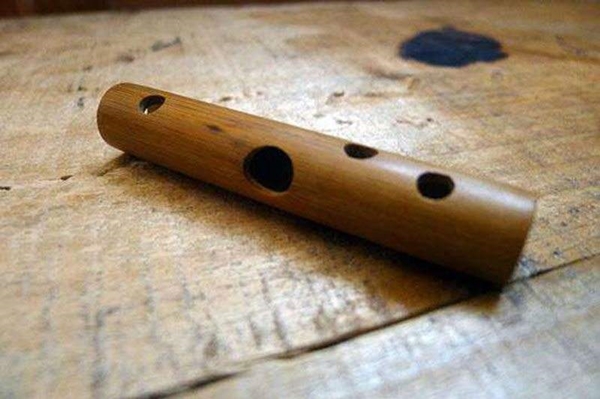How to play the mouth flute
To play the mouth flute, the thumbs of the right and left hands control the first and second holes, the index finger of the left hand presses the third hole, the middle finger and index finger of the right hand press the fourth and fifth holes, the ring finger of the right hand and the middle finger of the left hand press the body of the flute against the lips, and the ring finger of the left hand Hold the flute with the back of your fingers.

When the sound hole is fully pressed, the lowest sound is emitted. One hole is opened to emit a pure fourth above, and the first and second holes are opened for a pure octave. Move the two thumbs on the sound hole to pronounce the sound, and the first and second holes can respectively emit within a fourth. a series of scales.
When blowing the flute, the lips should be aligned with the blow hole, the angle should be close to the level, the damper should be small, the lip muscles should be tightened, and the air flow should be thin and urgent. Luck also has special requirements. During the whole playing process, the abdomen should be tightened and not loosened. Like the bamboo flute, the mouth flute can play a variety of oral techniques, especially the glissando is more smooth and smooth than the bamboo flute.
The two-hole mouth flute in the key of G can play an octave from d1 to d2; the five-hole mouth flute in the key of A can play 11 degrees from (g to C2). Mouth strength and changing the blowing angle, etc., blow out d, e, f3 sounds, the sound range is from d to C2, nearly two octaves. Through the coordination of opening and closing sound holes and mouth strength in different degrees, the rising and falling (semitone) sounds between each tone can also be played.
The tone of the flute is bright, high-pitched, similar to a whistle, and has strong penetrating power. It is especially suitable for expressing beautiful melodies and lively and lively cheerful tunes, and can vividly imitate the singing of birds and human voices. In ethnic bands, it is often used to play cadenza, which can be used for solo, ensemble or accompaniment. In addition, it can participate in the ensemble of Western orchestras, and it is a colorful instrument with unique effects.
 渝公网安备 50010702504639号
渝公网安备 50010702504639号